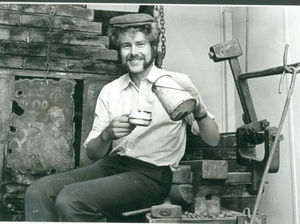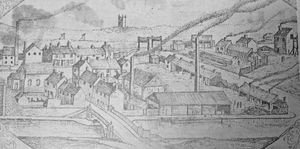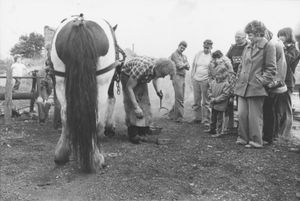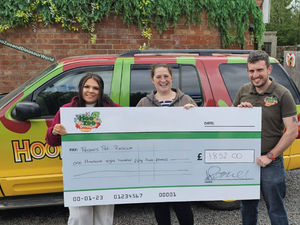How Black Country Living Museum was built from scratch
It was the moment they had all been waiting for - after decades of planning the Black Country Living Museum was ready to open for its first summer season.

People queued up for their first glimpse of the vision for how the area's proud history and its people were going to be celebrated.
From May 21 until September, the museum opened every Sunday and every weekday throughout July and August for it's first real preview for the public.
They were able to see artist's impressions and plans of how the trust behind its invention hoped it would look one day.
The idea for a museum was originally conceived back in 1952, when Dudley's new librarian Alex Wilson asked why the town did not have a bigger museum to reflect its role at the centre of the industrial revolution.
By the early 70s, the newly-formed Black Country Society had persuaded Dudley Council to establish a special section within its museums department which, thanks to the efforts of late museum keeper Richard Traves, already held some items relating to the region's industrial heritage.
A 26-acre derelict former mine and sewage works in Tipton Road was identified as suitable, and part of it was bought in 1973.

But the scheme was almost thwarted in its infancy after Dudley Council revealed it couldn't afford to fund the museum, which was expected to cost £600,000 to build
However, the project had attracted a loyal band of volunteers, and in 1975 they decided to raise the money themselves as an independent charitable trust with Ian Walden appointed as its chief.
A Black Country Museum company was formed on April 1, 1976, and the staff of six were faced with the task of creating a viable museum on what then was a derelict piece of land with many old mine shafts and a water treatment works.
But by 1978 it was possible to hold a preview season to show how the museum might develop although it was very much a work in progress, Mr Walden later told the Express & Star.
"We held a summer school at Mount Pleasant School in Coseley, and started getting calls from teachers asking when they could come to the museum. There was so much pressure, but there was nothing there," he said.

He freely admits there was very little for those first visitors to see on the site, which was chosen largely because of its canal that had been cleaned and dredged by volunteers.
"We painted some scenes and pictures, and put them on wooden boards, saying this is what it will look like. It was nothing more than a promotion," he said.
Yet despite only running for just under five months, 8,000 people paid a visit during the preview season.
"We deliberately opened it to public viewing before there was a lot to see because we knew it would take a long time to deconstruct buildings, move them and then re-erect them.
"The museum grew slowly, but every year we opened more and more exhibits. No commercial business would have done it that way," said Mr Walden.
Raymond Brothwood was among those who queued outside the Black Country Living Museum clutching his 30p entrance fee.
He later told the Express & Star that he had been curious to see what was inside. “At the time I had an antiques shop in Horseley Heath, Tipton, and so had donated quite a few things to the museum,” said the 69-year-old.
“I used to do house clearances and so had furniture, vases and old-fashioned fire grates, which could be used by the museum,” he added.
In the intervening decades, the museum has grown into a major heritage destination and one of Europe’s leading open-air museums, attracting more than 358,000 visitors in 2019.
Earlier this year staff and volunteers welcomed the attraction's 10 millionth visitor Heidi Ackroyd, 42, from Nottingham, visited the Tipton Road museum in February half-term with her children, Edward, six, and Felicity, four, as well as their uncle James and aunt Kayleigh for a family day out.
To mark the milestone she received a special 'golden ticket' gift pack to mark the occasion from the museum's chief executive Andrew Lovett.





